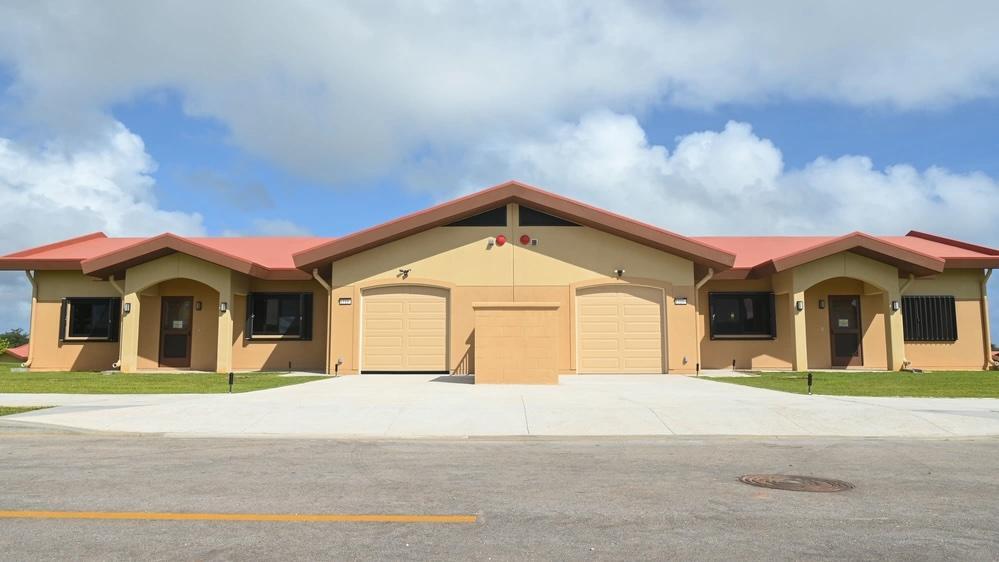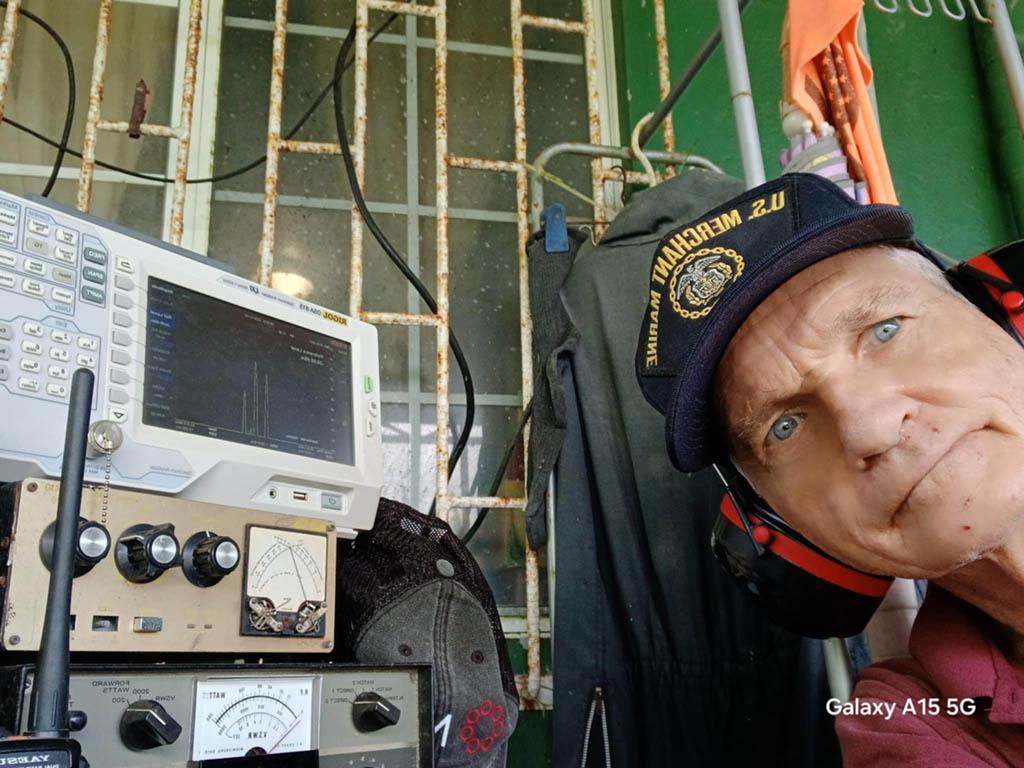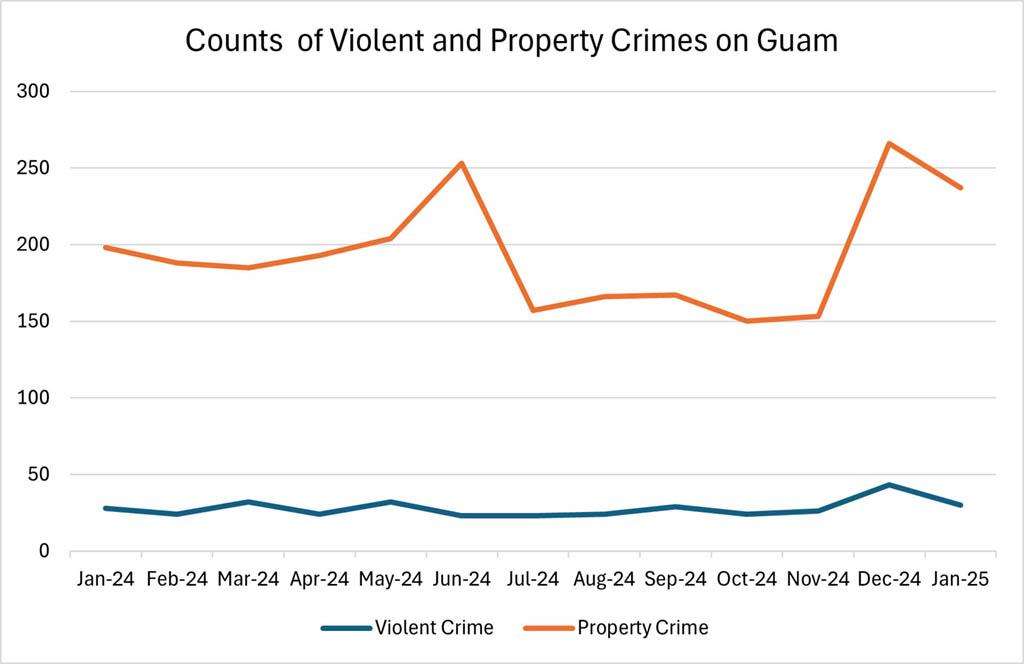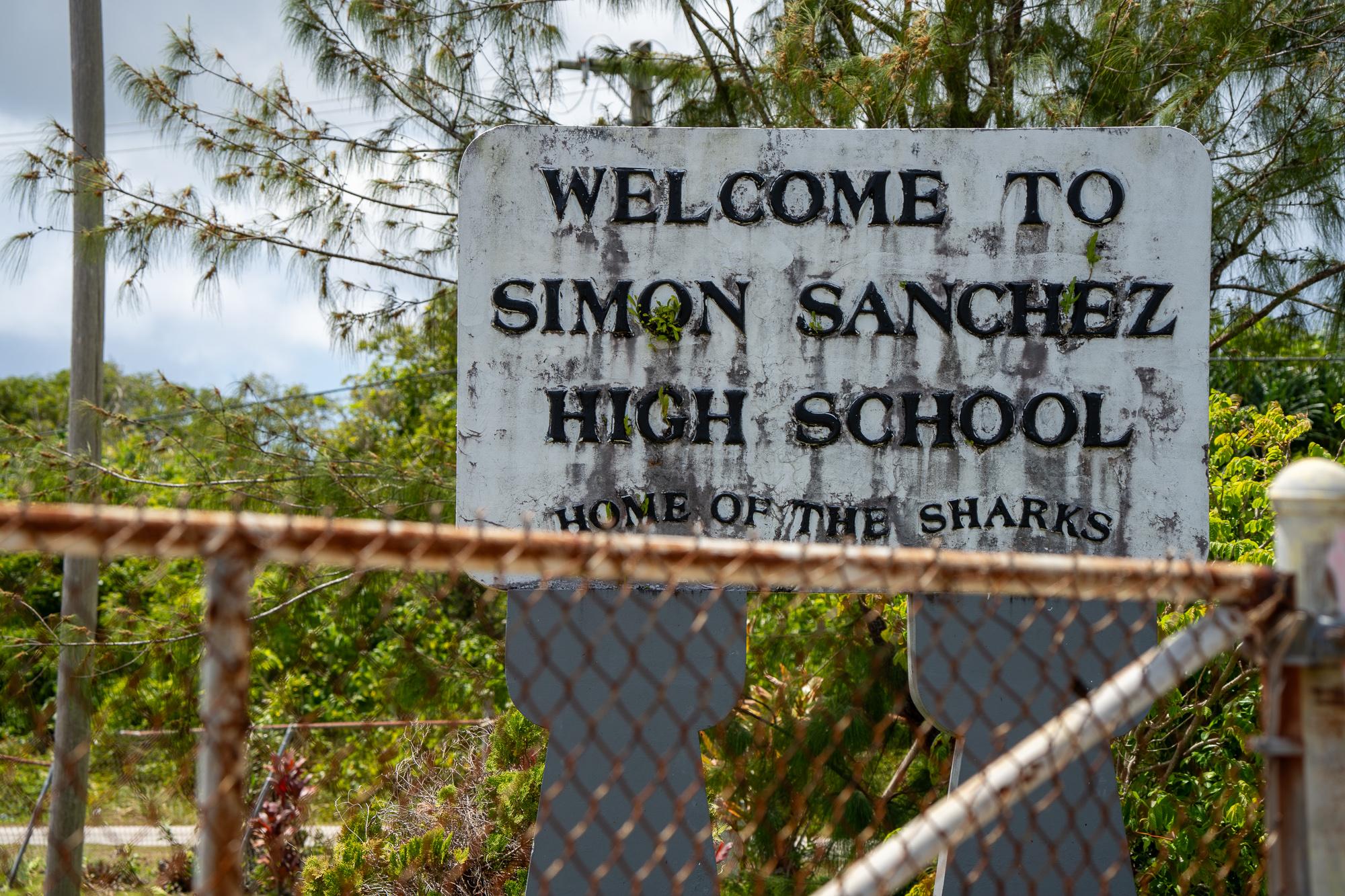The U.S. military is looking for ideas for housing for military personnel as the Guam buildup intensifies.
Guam also has a housing shortage that is driven by the high cost of construction, as well as a lack of inventory on the island.
A Request for Information was issued as a Special Notice on Feb. 17 by Naval Facilities Engineering and Systems Command Pacific “seeking innovative housing solutions to accommodate 1,000 to 4,000 additional accompanied and unaccompanied service members on the island of Guam due to increased military presence,” the notice said.
“The Department of Defense … anticipates receiving innovative concepts and ideas that will effectively address the housing needs of our esteemed service members and their family, while accommodating the expanding military presence on the island of Guam,” the RFI said.
Responses were due March 15. “The desired goal for this notice is to solicit maximum industry participation, which allows the [Department of the Navy] to formulate a concise strategy in a timely manner and maximize project concept viability for both the [Department of the Navy] and developers.”
The RFI welcomed all manner of solutions for “optimizing land utilization and ensuring high quality of life developments …”

Respondents were asked to present “groundbreaking sustainability strategies that embrace energy efficiency, waste reduction and eco-friendly construction practices” as well as include financial projections, and “outline potential partnerships with the Government of Guam, private sector entities, and local communities to ensure successful implementation.”
The RFI also addressed “transient lodging,” and requested “visionary short-term housing solutions … during relocations, deployments, or temporary assignment” for military personnel.
Eligible respondents include developers, contractors, and other stakeholders, the RFI said.
The RFI qualified where exactly such a development might be, saying “… specific sites for expanded housing have not yet been identified … .“
The idea of a privatized housing development for military personnel is not a new one. In 1996, Congress created the Military Housing Privatization Initiative under the National Defense Authorization Act.
Five large companies agreed to operate and maintain military housing in exchange for the full Basic Allowance of Housing of service members, while structuring their business models on an expected occupancy rate.
For example, Hunt Military Communities now owns approximately 52,000 homes spread across more than 40 military installations, according to its website.
Hunt can lease to a mix of military personnel, retirees and civilian personnel. Hunt has different rates for different tenants, charging what it refers to as market rates for retirees, according to its literature for tenants.
Liberty Military Housing provides housing on and near military installations across the United States.
Whether Guam will see privately managed housing on- or off-base is yet to be seen.
But if privatized military housing in Guam is off-base, bidders will need to offer property, as well as a plan for the development and what it will contain.
In January, in an analysis of the real estate market in Guam Business Magazine — sister publication to the Journal, Siska S. Hutapea, founder and president of Cornerstone Valuation Guam Inc., said, “Growth corridors for real estate developments are along Route 3 in Dededo and Route 15 in Mangilao.” Route 3 leads to Marine Corps Camp Blaz.
Speaking at the Guam Chamber of Commerce’s general membership meeting on March 27 at the Hilton Guam Resort & Spa, Rear Adm. Gregory C. Huffman, commander of Task Force Micronesia; said the RFI was successful. “We got a number of exciting and interesting prospects coming forward …,” he said.
Management of military housing on bases has been an issue in Guam.
According to Journal files, a joint venture of Core Tech International and Galaide Professional Services Inc. took over management of the Guam Housing Operations and Maintenance Services and Change of Occupancy Maintenance Services contract from Aug. 1, 2022. Naval Facilities Engineering and Systems Command Marianas pulled the then-$113 million-plus contract from Defense Base Services Inc. for poor performance some months prior to that.
In related news, The Department of Defense announced Aug. 12 the launch of the DoD Housing Feedback System, “an initiative designed to enhance transparency and accountability in DoD privatized military housing.” The new system allows active-duty personnel, and their “authorized dependents” to submit feedback on their current leased unit, ensuring that their voices are heard, and their concerns are addressed in a timely manner, DoD said in a release.
On Aug. 23, Information Systems and Networks Corp. of Bethesda, Md., was awarded a $27. 3 million modification to a previously awarded firm-fixed-price contract. The modification not only exercised Option Period Four, which provides property management support to Marine Corps personnel living in Unaccompanied Housing. The modification also increased “the number of full-time-equivalent building managers to meet the fiscal 2024 National Defense Authorization Act requirements to replace active-duty Marines currently performing barracks manager (and collateral building manager) duties across the Marine Corps [Unaccompanied Housing] portfolio” at 26 locations, to include the U.S. mainland, Hawaii and Okinawa.
Both the U.S. military and the resident population of Guam face housing challenges, and the subject has been discussed at meetings of the Civil-Military Coordination Council, according to releases after those meetings.
In January 2023, Naval Base Guam announced a new housing policy, effective Feb. 20, mandating that all incoming accompanied military personnel relocating from off island be placed in military family housing. This was to maximize occupancy and was to be implemented when housing at the naval base was below a 90% occupancy.
Military sometimes prefer to live off-base, since they are then not bound by rank or other considerations to the number of bedrooms allocated in on-base accommodation, or simply look for the experience of living in the Guam community.
But supply on the bases also dictates the market presence on-base and off-base, and Guam has a decades-long history of local investment to meet off-base housing needs.
In March, Huffman told the Journal, “The traditional split on military installations is about 40% on-base and about 60% off-base. Here on Guam — due to what we have for capacity on-base and what we have out in the civilian community — we actually flip that a little bit. We strive for about 60% on base and about 40% off-base. That’s a robust number of people that will be living out in the community,” Huffman said. There is not enough capacity to support 100% of personnel living on-base, he said. Inbound numbers to Guam would also include civilian personnel, Huffman said.
In addition, Andersen Air Force Base in Guam is set to receive half of Singapore’s F-15 fleet — about 12 planes, with accompanying infrastructure to be built, and the detachment formally established by 2029. “The intent right now and my understanding of that project is they will all live out in the community,” the admiral said. (See https://www.mbjguam.com/change-way-guam-see-new-military-command-increased-presence)
Construction of housing at Andersen Air Force has been ongoing in phases, but awards have been to replace housing. According to Journal files, Black Construction Corp. was awarded a $178 million contract for the replacement of Andersen housing in 2019 and most recently Pacific Rim Constructors was awarded a similar contract. See
https://www.mbjguam.com/guam-contractor-awarded-military-housing-contract-valiant-shield-returns-and-more.
And the contract for the Guam Missile Defense system’s control center will require “demolition of existing housing units” at Andersen Air Force Base. (See https://www.mbjguam.com/industry-days-set-missile-defense-milcon-contract
Guam has had various land use plans through the years.
The 1977 I Tano'-ta land use plan looked forward at the period from 1977 to 2000. The Guam Bureau of Statistics and Plans issued a North and Central Guam Land Use Plan in 2009, which aimed to revise the I Tano’-ta plan in the light of the military buildup, through an inter-agency working group. “Growth in the military sector will, in turn, impact private sector economic and residential growth and development. Much of this future growth is expected to occur in the northern and central part of Guam,” the 2009 plan said.
The Guam Housing Corp. solicited information in 2020 “to determine if there are businesses interested in building affordable homes on GHC properties,” but by then construction costs were rising, and contractors were also fully occupied with military construction awards. At the time, GHURA reportedly estimated the island needed 9,000 affordable homes.
Most recently, Gov. Lourdes A. Leon Guerrero announced July 1 the formation of the Attaining Housing Commission, which will consist of representatives of various GovGuam agencies. The commission will make various recommendations, convene quarterly meetings with stakeholders and procure the services of a consultant “to assist the Commission in developing actionable recommendations focussed on addressing Guam’s housing needs.” mbj
Guam housing RFI looks to meet buildup housing needs
Guam housing RFI looks to meet buildup housing needs
- Date Posted: Aug 27, 2024
- News: Guam
Recommended Articles...

Open and shut case Economic variations: The Matcha Tokyo opens, Tony Romas reopens; two others close
In Guam’s turbulent economic landscape, a new restaurant opens, and one restaurant is saved from permanent closure. Reflecting the difficulty of the economy, two businesses have closed doors.
Read More 
Amateur radio in Saipan and Guam still has fans using the radio waves
GARAPAN, Saipan and YIGO, Guam — Romeo “Bong” Malasarte and Eddie Williams are among the few remaining enthusiasts of the once-popular hobby of amateur radio on Saipan.
Read More 
Rising crime meets rising cost Commercial security demand up, gun sales down
According to the latest crime statistics reported by the Federal Bureau of Investigation, Guam saw increases in both violent and property crime in recent months.
Read More 
DPW releases complete procurement record for $167M Sanchez rebuild project
The Guam Department of Public Works has released the full procurement record and evaluation documents used to select the highest-ranked proposer for the Simon Sanchez High School rebuild project.
Read More 














